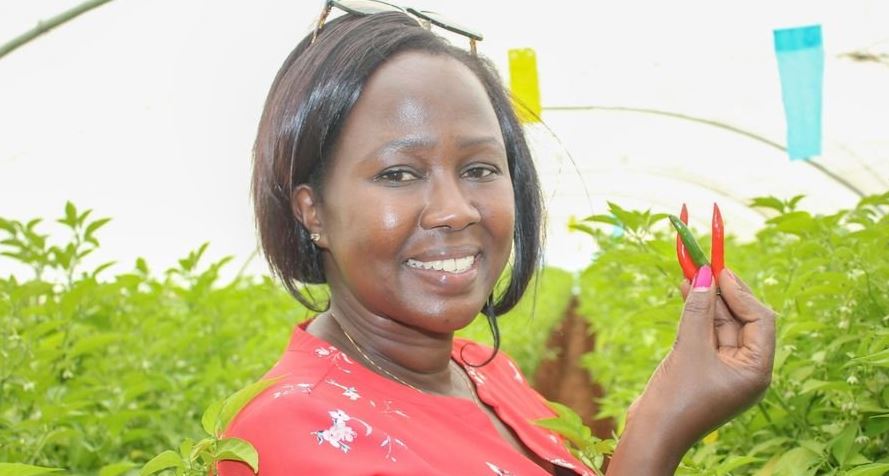
She spoke to nation.africa about the venture that sees her export her produce.
How and when did you start?
I developed an interest in the crop last year after visiting a farmer in Kitengela who grows them alongside herbs.
I was working in the finance field then, where I had stayed for about two decades and thought it was wise to use the plenty of idle land I had back home.
I invested Sh200,000 in setting up greenhouses, labour, drip lines and buying seedlings.
What varieties of chilli do you farm?
I grow the Habanero and Demon F1 varieties. Each greenhouse hosts 1,000 plants. Demon F1 resembles bullet chilli but it is robust in its production while Habenero looks like capsicum and it is one of the hottest chillies in the world and is preferred in the export market.
Why do you grow the crops in greenhouses?
Greenhouse is a controlled environment, thus it helps increase yields. We grow the crops in recycled polythene bags, which lowers our cost of production to about Sh50,000 per greenhouse.
Paint a picture of the harvest and where is the market?
From one greenhouse, I harvest between 50 and 100 kilos of chillies in a day when production is at its peak.
I sell them in the local market that includes hotels and restaurants, farmers using them as organic pesticides as well as the export market.
Demon F1 variety goes from Sh80 to Sh100 per kilo while Habernero fetches higher prices, with a kilo retailing at between Sh120 and Sh150.
There is a huge demand in the European Union (EU) market especially in cities like London, which have a high Asian-Indian population and demand goes up during colder months. We also are targeting the West Africa market such as Ghana and Nigeria.
I sell through an exporting agent but I am working to export my produce myself. Chillies are among eight varieties of horticultural produce targeted for promotion through the EU-funded Market Access Upgrade Programme.
Besides chillies, it also focuses on macadamia, groundnuts, French beans, snow peas, passion fruits, herbs and spices.
Many believe since this crop is pepper, it is not affected by pests and diseases. Is this the case?
It is attacked by pests such as false codling moth and aphids. We use traps to control them and also grow garlic, marigold and rosemary to help curb some of these pests.
What lessons have you learnt while growing the crop?
One should not focus on yields but give the plants the nutrition they need and they will produce more. The plants also grow taller in the greenhouse, over 3m taller, thus need good caring.
Chillies mature in six months and one should replace the crop after about two users.
Must chilli be grown in a greenhouse?
Dr Josiah Chiveu, a horticulture lecturer at the University of Eldoret: Not necessarily but chillies perform well in warm conditions, thus greenhouses offer an ideal environment.
They perform well in temperatures ranging from 20 to 300C. However, greenhouse conditions, on the flip side, offer an ideal environment for pests to thrive.
Aphids, for instance, suck the juice from the fruits, lowering the quality and making them unmarketable.
source http://nairobiwire.com/2020/12/my-hustle-making-sweet-money-from-chili-farming.html
No comments:
Post a Comment